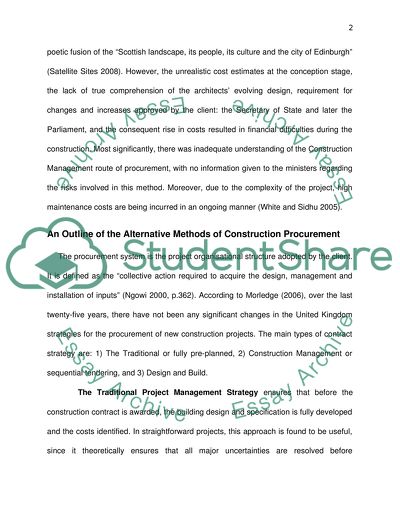Cite this document
(Inquiry of the Scottish Parliament Building at Holyrood Research Paper Example | Topics and Well Written Essays - 1500 words, n.d.)
Inquiry of the Scottish Parliament Building at Holyrood Research Paper Example | Topics and Well Written Essays - 1500 words. https://studentshare.org/engineering-and-construction/1562721-inquiry-of-the-scottish-parliament-building-at-holyrood
Inquiry of the Scottish Parliament Building at Holyrood Research Paper Example | Topics and Well Written Essays - 1500 words. https://studentshare.org/engineering-and-construction/1562721-inquiry-of-the-scottish-parliament-building-at-holyrood
(Inquiry of the Scottish Parliament Building at Holyrood Research Paper Example | Topics and Well Written Essays - 1500 Words)
Inquiry of the Scottish Parliament Building at Holyrood Research Paper Example | Topics and Well Written Essays - 1500 Words. https://studentshare.org/engineering-and-construction/1562721-inquiry-of-the-scottish-parliament-building-at-holyrood.
Inquiry of the Scottish Parliament Building at Holyrood Research Paper Example | Topics and Well Written Essays - 1500 Words. https://studentshare.org/engineering-and-construction/1562721-inquiry-of-the-scottish-parliament-building-at-holyrood.
“Inquiry of the Scottish Parliament Building at Holyrood Research Paper Example | Topics and Well Written Essays - 1500 Words”. https://studentshare.org/engineering-and-construction/1562721-inquiry-of-the-scottish-parliament-building-at-holyrood.


